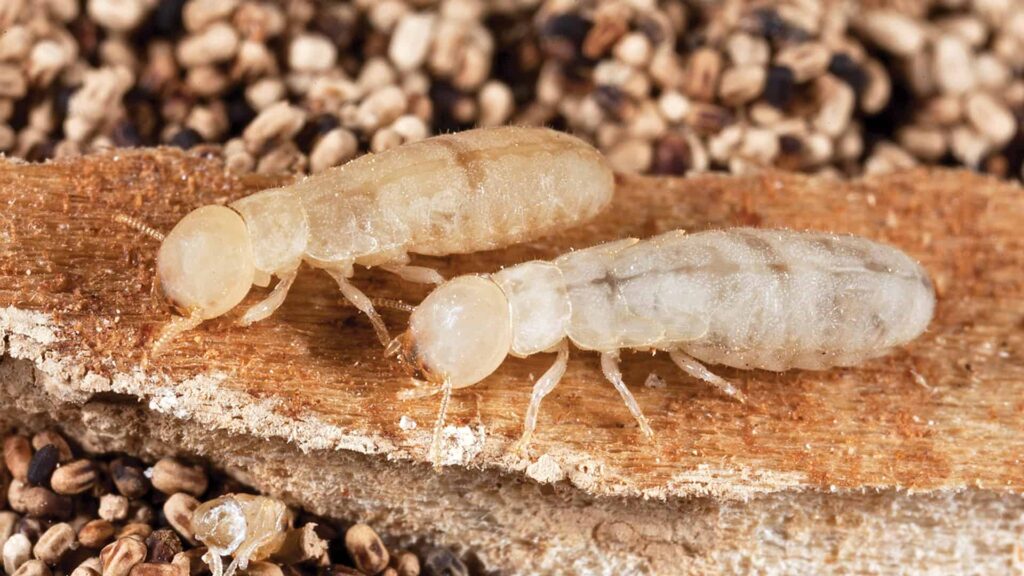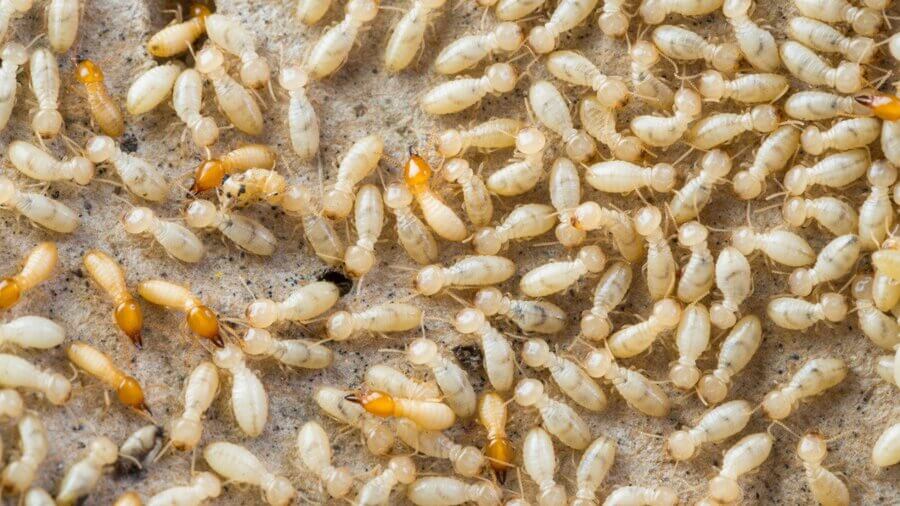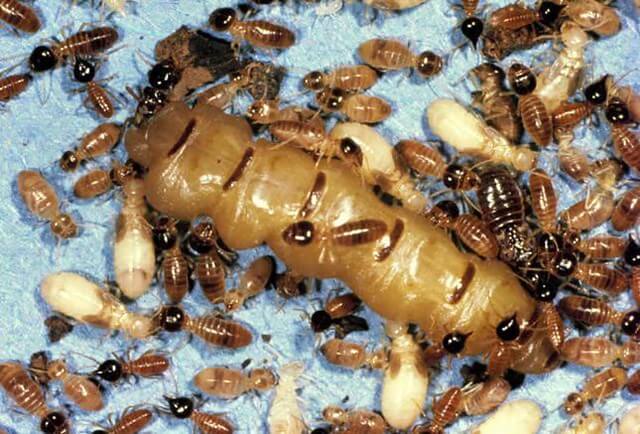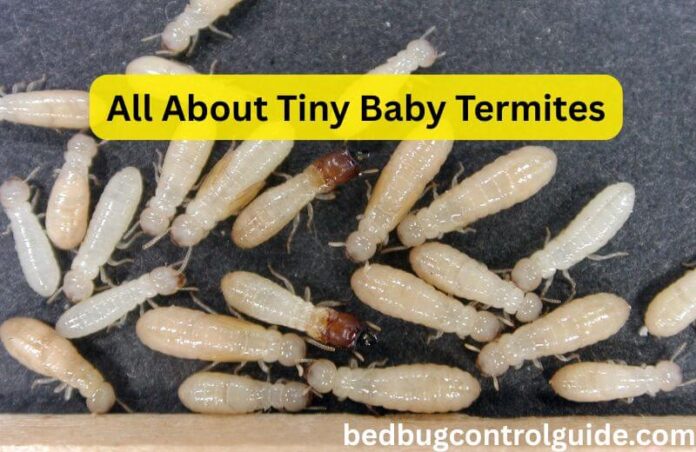Termites are tiny pests that can cause big problems. Among them are tiny baby termites, also known as termite nymphs. These small pests play a huge role in the growth of a termite colony. Understanding what they look like, where they live, and how to detect their presence can help you protect your home. This guide will explain everything you need to know about these baby termites and how to respond if you see them.
What Do Tiny Baby Termites Look Like?

Baby termites are very small, typically less than 1/10 of an inch long. Their soft bodies are oval-shaped, and they look like miniature adult termites. Here’s a breakdown of their features:
- Size and Shape: They’re tiny and oval-shaped.
- Color: Most are pale, white, or cream-colored. They might look a bit translucent.
- Wings: Unlike grown termites, baby termites don’t have wings.
- Texture: They lack the hard exoskeleton of adults, so they appear soft-bodied.
At first glance, they might look like tiny white ants. But if you look closely, their straight antennae and thicker waists set them apart.
Where Are Baby Termites Found?

Baby termites live in hidden, moist areas. They are protected within the colony and rarely wander out in the open. Common places to find them include:
- Inside Damp Wood: Moist wood is a hotspot for termites. Baby termites may be hiding in wooden beams or furniture with water damage.
- Under the Soil: Subterranean termites build nests in the soil. These nests are perfect shelters for growing nymphs.
- Hidden Spaces: You might find them within walls, floors, or other places with moisture.
If you suspect termites, check areas in your home that are dark, damp, or hard to reach. Our latest post What do Bed Bug Bites Look Like on Human Skin: Identification, Treatment, and Prevention. Follow Us on Facebook for the latest updates.
What Is the Role of Baby Termites in a Colony?
Tiny baby termites have important jobs in termite colonies. Even though they don’t eat wood themselves, their presence supports the colony’s growth. Here’s how they contribute:
- Baby termites mature into three different roles:
- Workers forage for food and maintain the nest.
- Soldiers defend the colony against threats.
- Reproductives, like future kings and queens, create new colonies.
- They rely on worker termites to feed them. At this stage, baby termites are delicate and need constant care.
Each termite starts as a baby. Over time, their role depends on what the colony needs most.
How to Identify a Termite Infestation?

Even though you might not spot tiny baby termites directly, their presence can point to a larger termite infestation. Here are signs to watch for:
- Mud Tubes: Termites build these as tunnels to move between their nest and food sources.
- Hollow Wood: Knock on wood in your home. If it sounds hollow, termites might be eating it from the inside.
- Frass: These are small, pellet-like droppings left by termites.
- Discarded Wings: Termites shed their wings after they mate and settle down to start a colony.
- Blistered Wood: Termites often cause wood surfaces to bubble or blister.
If you notice one or more of these signs, there’s a good chance termites are nearby. You can also read the post on What Do Bed Bugs Look Like?
What to Do If You Suspect Termites
If you think you have a termite infestation, don’t panic. Follow these steps to address the problem:
- Call a Professional
Contact a pest control expert immediately. They can inspect your home and suggest an effective treatment plan. Look for reputable services with experience handling termite issues.
- Reduce Moisture in Your Home
Fix any leaks, and ensure your home stays dry. Moisture is a huge attraction for termites.
- Seal Cracks and Gaps
Close cracks in walls, floors, or your foundation where termites can get inside.
- Store Wood Away from Your Home
Keep firewood and any wood debris away from your house to reduce the risk of attracting termites.
- Inspect Regularly
Conduct routine checks in your home. Early detection can save you from costly repairs.
Final Thoughts
Tiny baby termites may seem harmless, but they are a key part of a termite colony’s survival. Knowing their appearance, habitat, and role can help you identify a potential termite infestation. Take action at the earliest sign of termites to protect your home and belongings.
FAQs
What to do if you find baby termites?
If you spot them, contact a pest control professional right away. Act quickly to stop the infestation from growing.
How tiny are baby termites?
They are less than 1/10 of an inch long.
Where do baby termites live?
They live in moist wood or soil and remain hidden within their nests.
Can baby termites fly?
No. Baby termites don’t have wings. Only certain adult termites, called swarmers, can fly.
Can baby termites bite?
No. Baby termites don’t have the ability to bite or cause harm directly.
What do baby termites eat?
They don’t feed themselves. Worker termites feed them pre-digested cellulose from wood.
Are baby termites attracted to light?
No, baby termites are not attracted to light. Adult swarmers are more likely to be drawn to it.
Are termites harmful to humans?
While termites don’t directly harm humans, they can damage structures, causing expensive repairs.



